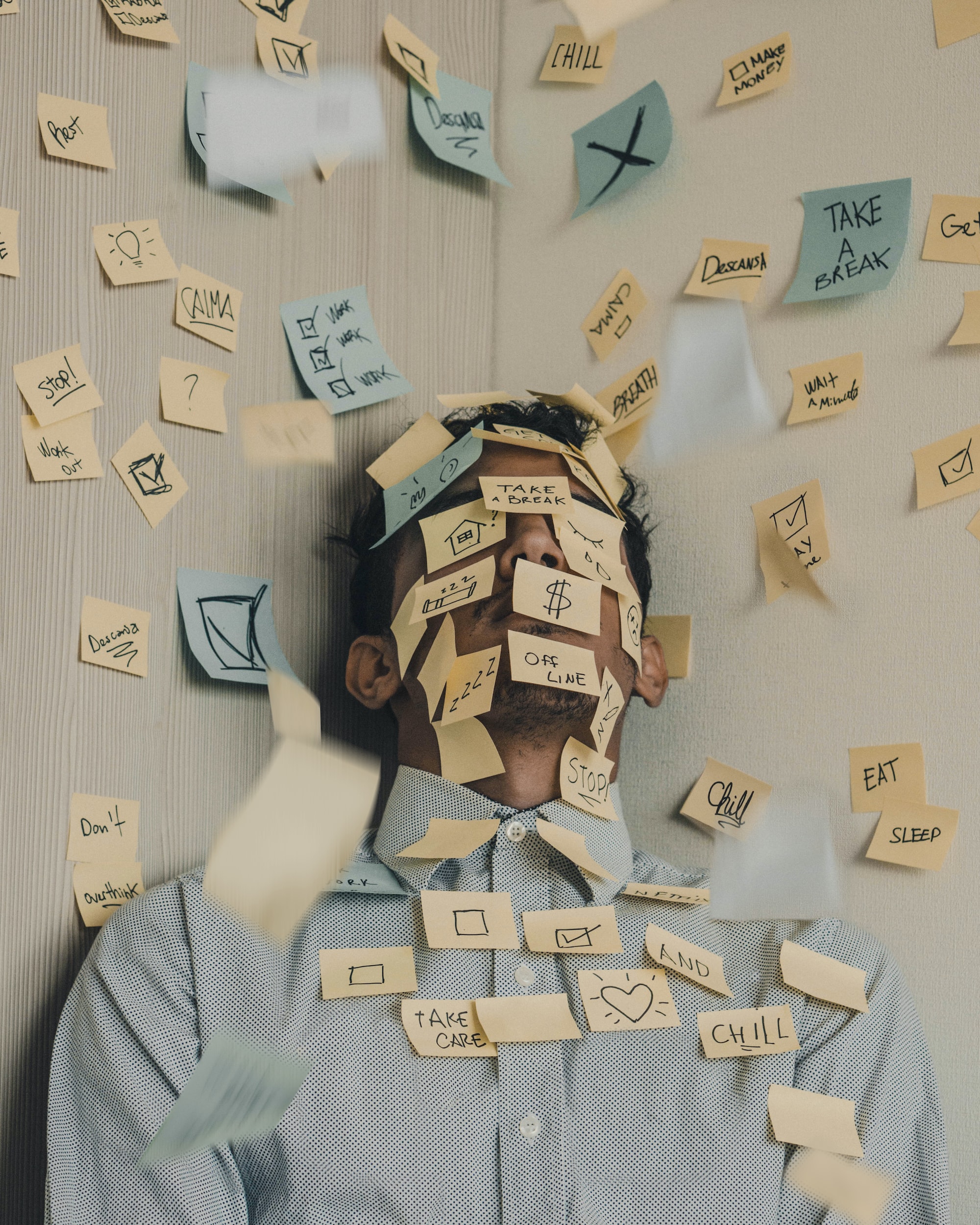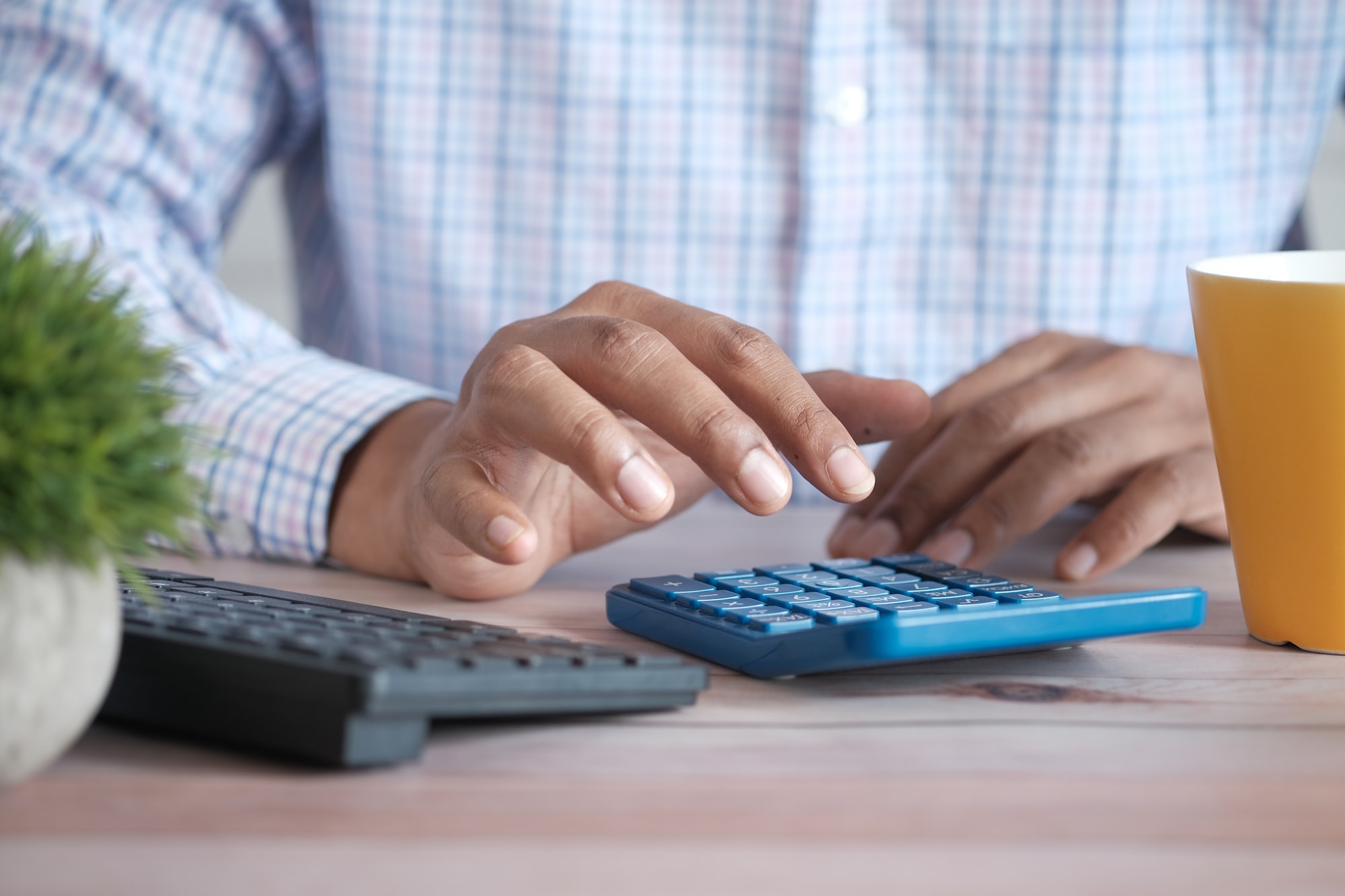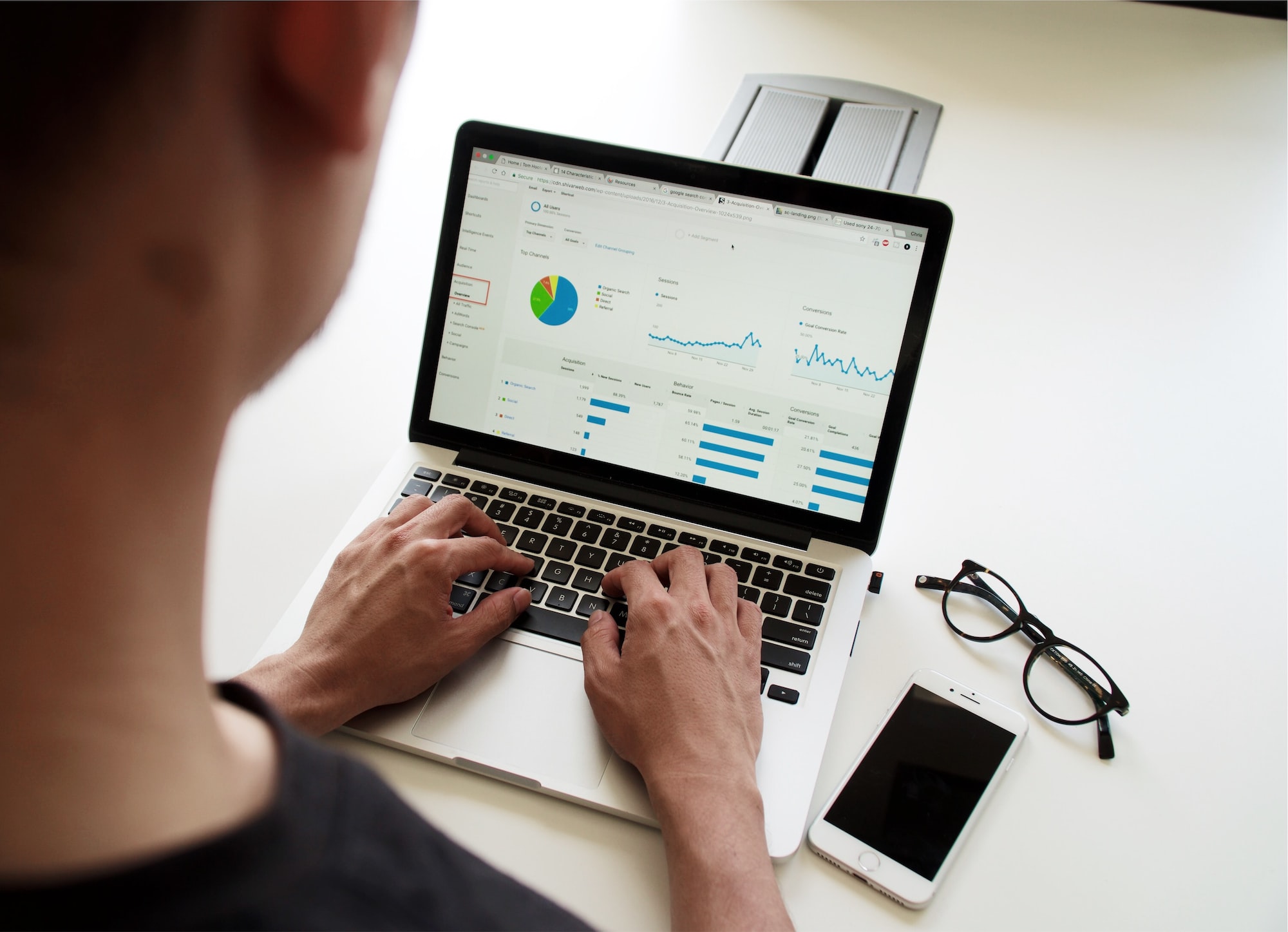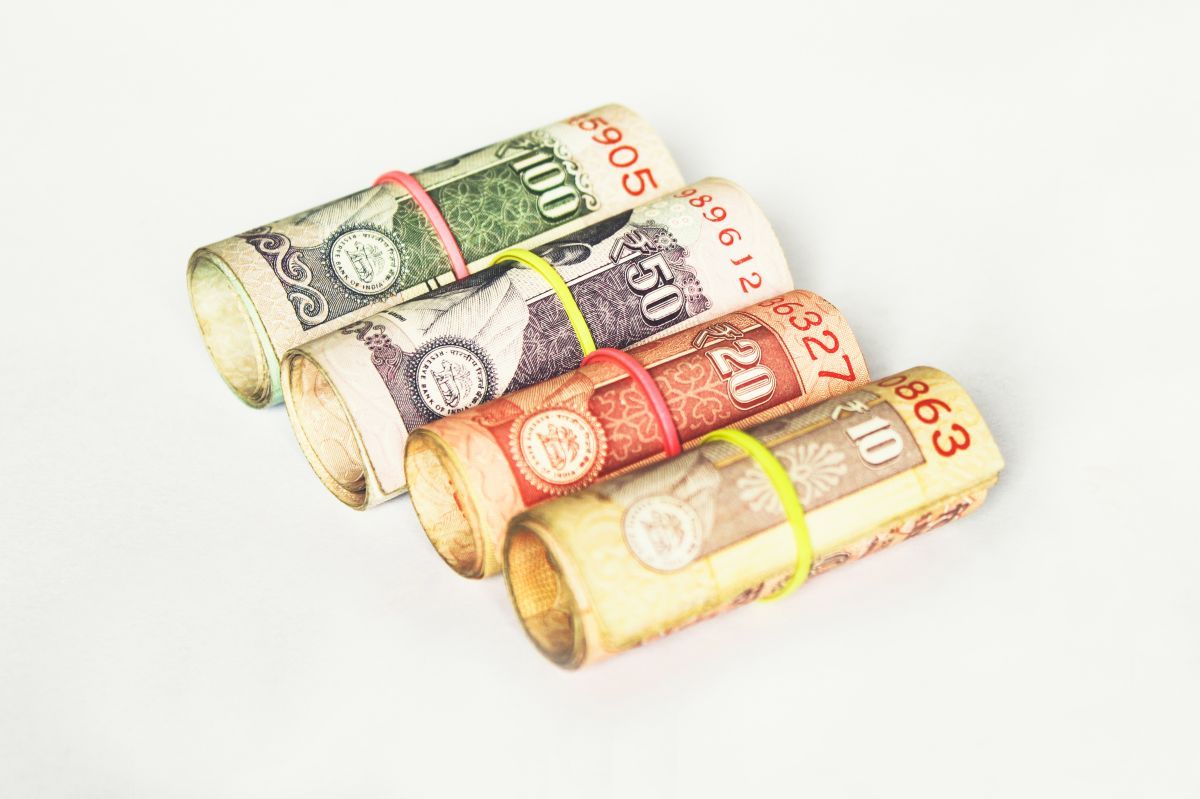Preparing for a UI/UX design job interview?
We've got you covered!
In this article, we take a look at some in-depth explanations and conversational answers to common UI/UX interview questions. to help you bag your next big interview.
Let's dive in and explore the world of UI/UX interview questions together!
- Can you describe the difference between user interface (UI) design and UX design?
- Can you explain the UX design process?
- How do you conduct user research?
- What is a user persona and why is it important in UX design?
- How do you approach information architecture?
- What are some common UX design principles?
- How do you ensure accessibility in your designs?
- What is the importance of usability testing?
- How do you incorporate user feedback into your designs?
- Can you explain the concept of wireframing and its purpose?
- What tools do you use for UI/UX design?
- Can you describe your design workflow from concept to final product?
- How do you prioritize features and functionality in your designs?
- What is responsive design, and why is it important?
- How do you create a seamless user experience across different devices?
- Can you describe the concept of interaction design?
- What is a design pattern, and how do you use it in your work?
- How do you approach designing for mobile applications?
- Can you explain what are micro-interactions?
- How do you design for internationalization and localization?
- Can you describe a challenging project you worked on and how you overcame the design obstacles?
- How do you stay updated with the latest UI/UX design trends?
- How do you balance user needs and business goals in your designs?
- How do you handle constructive criticism of your designs?
- How do you collaborate with developers during the design process?
- How do you ensure consistency in your designs across different screens and interactions?
- How do you handle tight deadlines and conflicting priorities in your design projects?
- How do you approach designing for accessibility and inclusivity?
- What are the key principles of visual design, and how do you apply them in your work?
- What is Information Architecture and its importance in UI design?
- How do you ensure consistent and coherent visual language in your designs?
- Can you describe a project where you had to balance aesthetics and usability? How did you approach it?
- How do you conduct usability testing to inform your design decisions?
- What tools and software do you use for UI design, prototyping, and collaboration?
- How do you handle feedback and critique from stakeholders and team members?
- How do you approach designing for different screen sizes and devices?
- How do you approach designing for accessibility in your UI designs?
- How do you stay updated with the latest UI design trends and emerging technologies?
- How do you ensure consistency and maintain design standards across different projects or within a design team?
- Can you explain the difference between UI design and graphic design?
- Can you explain the UX design process from start to finish?
- How do you approach conducting user research and what methods do you use?
- Can you walk me through a project where you had to balance business goals and user needs?
- How do you ensure that your designs are accessible and inclusive?
- How do you prioritize and incorporate user feedback into your design iterations?
- Can you discuss a challenging design problem you faced and how you solved it?
- What techniques do you use to create effective information architecture and navigation systems?
- How do you approach creating wireframes and prototypes, and what tools do you use?
- Can you explain the importance of usability testing in the design process?
- How do you stay updated with the latest UX design trends and industry developments?
Can you describe the difference between user interface (UI) design and UX design?
User interface (UI) design and user experience (UX) design are two distinct but interconnected disciplines.
UI design focuses on the visual elements and interactions within a digital product. It involves creating aesthetically pleasing and functional interfaces that are visually appealing and intuitive for users.
UI designers are responsible for designing elements such as buttons, icons, color schemes, typography, and layout.
On the other hand, UX design encompasses the entire user journey and aims to create a seamless and meaningful experience for users.
It involves understanding user needs, conducting user research, creating wireframes and prototypes, and testing and iterating on designs.
UX designers focus on the overall user flow, information architecture, and usability of a product.
In simple terms, UI design deals with the look and feel of a product, while UX design focuses on how it works and how users interact with it.
While UI design is a subset of UX design, both are crucial for creating successful digital experiences.
Effective collaboration between UI and UX designers is vital to ensure a cohesive and delightful user experience.
Can you explain the UX design process?
The UX design process is a systematic approach to creating user-centered designs that meet the needs and goals of users.
It involves several key steps that guide designers in understanding, designing, and iterating on the user experience. Here's a breakdown of the UX design process:
Research: The first step is to conduct user research to gain a deep understanding of the target audience, their behaviors, needs, and their pain points. This involves techniques such as user interviews, surveys, and data analysis.
User Personas: Once the research is complete, I create user personas, which are fictional representations of typical users. Personas help designers empathize with users and make design decisions that align with their needs and preferences.
Information Architecture: Information architecture involves organizing and structuring content in a way that is intuitive and easy to navigate for users. This includes creating user flows, and sitemaps, and defining the hierarchy of information.
Wireframing and Prototyping: Wireframes are low-fidelity visual representations of the user interface, outlining the layout and basic functionalities. Prototypes, on the other hand, are interactive and more refined representations of the design. Both wireframes and prototypes help visualize and test the user experience before the development stage.
Usability Testing: Usability testing involves observing real users interacting with the design prototypes. This helps identify usability issues, gather feedback, and validate design decisions. Testing can be conducted through moderated sessions, remote testing, or A/B testing.
Iteration and Refinement: Based on the insights gathered from usability testing, the design is refined and iterated upon. This involves making necessary changes to address usability issues, improve interactions, and enhance the overall user experience.
Visual Design: Once the interaction design is solidified, visual design elements such as color, typography, and imagery are added to create an aesthetically pleasing interface that aligns with the brand and user expectations.
Collaboration: Throughout the process, collaboration with stakeholders, developers, and other team members is crucial. Effective communication and collaboration ensure that the design aligns with business goals and technical feasibility.
Launch and Evaluation: After the design is implemented, it is launched to the users. Post-launch, it's important to gather feedback, monitor user behavior, and evaluate the success of the design against defined metrics. This information helps in identifying areas for further improvement and optimization.
Overall, the UX design process is a cyclical and iterative approach, where each step informs and influences the next. It emphasizes understanding user needs, prototyping, testing, and continuous improvement to create user-centric designs that deliver exceptional user experiences.
How do you conduct user research?
To conduct user research effectively I start by defining research objectives and clearly outlining what I want to learn and the questions that need to be answered.
I would then choose an appropriate method to gather insights like interviews, surveys, user observations, and competitor analysis followed by identifying and recruiting participants that match the target audience.
This would help me gather data through interviews, observations, or surveys, and analyze and synthesize data by understanding patterns, trends, and insights from the research findings.
I would conclude by translating insights into design decisions and using the research findings to make informed and relevant design choices.
What is a user persona and why is it important in UX design?
A user persona is a fictional representation of a target user based on research and data. It helps designers understand user needs, behaviors, and motivations.
Personas bring focus and empathy to the design process by humanizing the target audience.
By referring to user personas, designers can make informed decisions about functionality, features, and design elements that resonate with their target users.
How do you approach information architecture?
When approaching information architecture, I analyze content and understand the scope and nature of the information that needs to be organized.
Then, I define a hierarchy to categorize content into logical groups and determine relationships between them.
I also focus on designing intuitive navigation systems that allow users to access information easily and implementing search features to help users find specific information quickly.
Finally, I iterate and test to refine the information architecture through user testing and feedback.
What are some common UX design principles?
Some of the most common UX design principles include:
a) User-centered design: Prioritize the needs and goals of the target users throughout the design process.
b) Consistency: Maintain a consistent visual and interactive experience to reduce cognitive load.
c) Accessibility: Ensure that the design is inclusive and usable by people with disabilities.
d) Learnability: Make it easy for users to understand and navigate the interface without extensive instructions.
e) Feedback and responsiveness: Provide clear and timely feedback to user actions to enhance the sense of control and understanding.
f) Simplicity: Strive for simplicity in design, minimizing complexity and unnecessary elements.
g) Visual hierarchy: Use visual cues to guide users' attention and prioritize important information.
How do you ensure accessibility in your designs?
To ensure accessibility in designs, I
a) Use proper color contrast: Ensure sufficient contrast between text and background colors to aid readability.
b) Provide alternative text (alt text) for images to describe them to users who cannot see them.
c) Structure content using semantic HTML: Use appropriate HTML elements to convey the meaning and structure of content.
d) Implement keyboard navigation: Ensure that all interactive elements can be accessed and operated using a keyboard.
e) Design with scalability in mind: Accommodate varying text sizes, screen resolutions, and assistive technologies.
f) Conduct accessibility testing: Use tools and perform manual testing to identify and address accessibility issues.
What is the importance of usability testing?
Usability testing is crucial in UX design as it helps identify usability issues and gather feedback directly from users. It allows designers to validate design decisions, uncover pain points, and understand how users interact with the product.
Through usability testing, designers can iterate and refine the design to improve the overall user experience, leading to higher user satisfaction and engagement.
How do you incorporate user feedback into your designs?
Incorporating user feedback involves active listening and considering users' suggestions, concerns, and pain points during user testing or feedback sessions, followed by Prioritizing and identifying recurring feedback to streamline changes or improvements based on impact and feasibility.
This gets me an insight into the iterative design and enables making incremental changes to the design based on user feedback and testing, continuously improving the user experience.
Finally, I communicate the changes to my stakeholders to discuss and explain the rationale behind design decisions influenced by user feedback.
Can you explain the concept of wireframing and its purpose?
Wireframing involves creating low-fidelity visual representations of a design's structure and layout. Its purpose is to outline the basic skeletal framework of a user interface without focusing on visual aesthetics or details.
Wireframes help communicate and validate the overall layout, content hierarchy, and functionality early in the design process. They serve as a foundation for discussion, iteration, and collaboration among designers, stakeholders, and developers.
What tools do you use for UI/UX design?
Some of the tools I use in my design process are:
Sketch: A vector-based design tool for creating user interfaces and interactive prototypes, primarily for macOS.
Adobe XD: A powerful design and prototyping tool that allows designers to create interactive prototypes and collaborate with others.
Figma: A web-based collaborative design tool that enables real-time collaboration and prototyping. It is platform-independent and works on macOS, Windows, and Linux.
InVision Studio: A comprehensive design tool that combines features of both prototyping and animation to create interactive and dynamic UI designs.
Axure RP: A prototyping tool that allows designers to create complex, interactive prototypes with advanced interactions, logic, and conditional flows.
Marvel: A simple and intuitive prototyping tool that enables designers to create interactive mockups and wireframes with ease.
Balsamiq: A wireframing tool that focuses on quick sketching and low-fidelity mockups, ideal for rapid prototyping and early-stage design exploration.
Zeplin: A collaboration tool that streamlines the handoff process between designers and developers by providing design specs, assets, and code snippets.
Adobe Creative Cloud Suite: Adobe Photoshop, Illustrator, and InDesign are widely used for creating graphics, illustrations, and layouts that can be integrated into UI designs.
Protopie: A tool for creating interactive and high-fidelity prototypes that can be deployed on various platforms, including mobile devices and web browsers.
Note: Remember that the choice of tools often depends on personal preference, project requirements, and the specific needs of the design team.
Can you describe your design workflow from concept to final product?
The process varies with the product I'm designing for but usually, this is what my workflow looks like:
Research and Analysis: First, I dig into the project details like understanding what the client wants, who the target audience is, and what the competition looks like. This involves doing some research and analyzing the market.
Ideation and Conceptualization: Next, I let my creative juices flow and come up with ideas. I sketch out rough concepts and figure out the overall design direction I want to take.
Wireframing and Prototyping: Once I have a clear direction, I create wireframes, which are like blueprints for the design. They help me define the structure and functionality of the interface. After that, I build interactive prototypes to simulate how users will interact with the design.
Visual Design: Now it's time to make things visually appealing! I apply visual elements like colors, typography, and branding to create an interface that looks great.
Usability Testing: I conduct user testing sessions to get feedback from real users. This helps me identify any issues with usability and make improvements based on their experiences.
Iteration and Refinement: Armed with user feedback, I go back to the drawing board and make necessary improvements to the design. It's all about iterating and refining the design based on what I've learned.
Handoff: Once the design is in a good place, I prepare the design assets and create documentation to hand off to the developers. This helps them understand the design and work on implementing it smoothly.
Collaboration with Developers: I work closely with the developers to make sure they understand the design and that it's implemented accurately according to the specifications.
Quality Assurance: Before the final product is launched, I conduct thorough testing to ensure that everything works as intended. This involves checking for any remaining issues and making sure the design and functionality meet the requirements.
How do you prioritize features and functionality in your designs?
I start by understanding user needs by conducting user research and gathering insights to identify the most critical user requirements.
Then, I align it with the business goals and consider the objectives of the product or organization, and ensure the design supports them.
I also carry out an impact vs. effort analysis to gauge ROI and assess the potential impact of each feature or functionality against the effort required to implement them.
All this is done in collaboration with stakeholders which involves engaging in discussions with stakeholders to collectively determine the priority of features based on user value, technical feasibility, and resource constraints.
What is responsive design, and why is it important?
Responsive design is an approach that ensures a website or application adapts and provides an optimal viewing experience across various devices and screen sizes.
It involves fluid layouts, flexible images, and adaptive navigation. Responsive design is important because it allows users to access and interact with a product seamlessly, regardless of the device they use.
It enhances user experience, improves accessibility, and addresses the increasing prevalence of mobile and multi-device usage.
How do you create a seamless user experience across different devices?
To create a seamless user experience across different devices, I prioritize mobile-first design and start by designing for mobile devices, ensuring a smooth and focused experience for smaller screens.
I use responsive design techniques and employ fluid grids, flexible images, and media queries to adapt the layout and content based on the device's screen size.
I also regularly test the design on various devices to ensure consistency and functionality across different platforms and consider touch interactions to optimize the design for touch-based interactions on mobile devices, such as larger tappable areas and clear call-to-action buttons.
Then, I streamline content and prioritize and present essential content prominently while considering the limitations of smaller screens.
I make sure that I provide a consistent visual language that manages visual consistency in terms of colors, typography, and overall branding across different devices.
Can you describe the concept of interaction design?
Interaction design focuses on designing how users interact with a product, emphasizing the usability, intuitiveness, and delight of those interactions.
It involves designing meaningful and intuitive user interfaces, defining user flows, and creating interactive elements such as buttons, forms, and animations.
Interaction design aims to optimize the user's interaction with the product, ensuring efficient task completion and a positive user experience.
What is a design pattern, and how do you use it in your work?
A design pattern is a reusable solution to a commonly occurring design problem.
It provides a standard approach or template that has proven to be effective in addressing specific design challenges.
Design patterns help streamline the design process, improve consistency, and enhance usability.
In my work, I leverage design patterns by applying established principles and best practices, adapting them to suit the specific context and requirements of the project.
Design patterns serve as a valuable reference and guide for creating intuitive and user-friendly interfaces.
How do you approach designing for mobile applications?
When designing for mobile applications, I:
a) Understand the target users and their needs in the mobile context.
b) Prioritize essential functionality and content to ensure a focused mobile experience.
c) Optimize the user interface for touch interactions, using appropriate touch targets and gestures.
d) Create a seamless and intuitive navigation system, considering limited screen space.
e) Use responsive design techniques to ensure the application adapts to different screen sizes.
f) Conduct usability testing on various mobile devices to identify and address usability issues.
g) Consider platform-specific guidelines and design patterns to ensure consistency with the respective operating systems.
Can you explain what are micro-interactions?
Microinteractions are small, subtle, and often interactive design elements that provide feedback and communicate the system's status or response to user actions.
They can include actions like button clicks, form submissions, hover effects, notifications, or loading animations.
Micro-interactions add a layer of engagement and delight to the user experience, making it more intuitive, informative, and enjoyable.
They play a crucial role in shaping the overall user perception of a product, contributing to its usability and perceived quality.
How do you design for internationalization and localization?
When designing for internationalization and localization, I use scalable and flexible design elements to accommodate different languages and content lengths and allow for the integration of translation and localization services.
I try to ignore cultural biases in iconography, colors, and imagery that may not resonate with diverse audiences and ensure proper alignment and support for languages with different reading directions.
I consider date, time, and currency formats that are appropriate for different regions and conduct usability testing with representative users from the target regions to uncover any cultural or language-related issues.
Can you describe a challenging project you worked on and how you overcame the design obstacles?
One challenging project I worked on was a complex e-commerce platform with multiple user personas and intricate purchasing workflows. The main design obstacles included:
a) Balancing the needs and expectations of different user personas while maintaining a cohesive user experience.
b) Streamlining the purchasing process to reduce friction and enhance conversions.
c) Ensuring a visually appealing and consistent design across a vast range of product categories.
To overcome these obstacles:
a) Conducted thorough user research and created detailed user personas to understand their motivations, pain points, and purchasing behaviors.
b) Collaborated closely with stakeholders, conducting frequent meetings and workshops to align on priorities and make informed design decisions.
c) Utilized information architecture techniques to simplify the navigation and categorization of products, making it easier for users to find what they need.
d) Iterated on wireframes and prototypes, gathering feedback from users and stakeholders at each stage.
e) Conducted extensive usability testing to identify and address usability issues, refining the design based on user feedback.
f) Implemented a modular design approach to maintain visual consistency and adaptability across various product categories.
Despite the challenges, we successfully delivered an e-commerce platform that met the diverse needs of users, resulted in improved user engagement and increased conversions.
How do you stay updated with the latest UI/UX design trends?
To stay updated with the latest UI/UX design trends, I :
a) Regularly read industry blogs, online publications, and design-focused websites.
b) Follow influential designers and industry leaders on social media platforms.
c) Engage in design communities, attend conferences, and participate in design-related webinars or workshops.
d) Experiment with new tools and technologies, continuously seeking opportunities for learning and growth.
e) Stay curious and open to new ideas, challenging myself to explore different designs perspectives and approaches.
f) Actively seek feedback and engage in discussions with peers to gain insights and exchange knowledge.
g) Take part in personal projects or design challenges to explore and experiment with emerging design trends.
How do you balance user needs and business goals in your designs?
Balancing user needs and business goals is essential for successful UX design. Here's how I approach it:
a) Conduct user research to understand user needs, pain points, and goals.
b) Collaborate with stakeholders to gain a deep understanding of the business objectives and constraints.
c) Identify common ground and overlap between user needs and business goals.
d) Prioritize features and functionality based on their impact on both users and the business.
e) Advocate for user-centered design principles and communicate the value of meeting user needs to stakeholders.
f) Continuously gather user feedback and data to validate design decisions and ensure alignment with business goals.
g) Strive for a win-win situation where the user experience is optimized, and the business objectives are met.
How do you handle constructive criticism of your designs?
Constructive criticism is an invaluable opportunity for growth and improvement. Here's how I handle it:
a) Listen actively: Pay close attention to the feedback, seeking to understand the perspective and reasoning behind it.
b) Remain open-minded: Embrace different viewpoints and be receptive to suggestions for improvement.
c) Separate feedback from self-worth: Remember that criticism is not a personal attack but an opportunity to enhance the design.
d) Ask clarifying questions: Seek additional context or examples to gain a better understanding of the critique.
e) Reflect and analyze: Take time to evaluate the feedback objectively and identify areas where adjustments or improvements can be made.
f) Iterate and test: Apply the feedback by iterating on the design, conducting usability tests, and seeking further feedback to validate the changes.
g) Appreciate the input: Thank the person offering the criticism for taking the time to review and provide valuable insights.
How do you collaborate with developers during the design process?
Collaborating with developers is crucial to ensure the successful implementation of the design. Here's my approach:
a) Engage in early and ongoing communication: Involve developers from the initial stages of the design process to align on technical feasibility and constraints.
b) Maintain open channels of communication: Regularly communicate with developers, addressing any questions, clarifications, or design adjustments promptly.
c) Provide detailed design specifications: Create comprehensive design documentation, including style guides, design patterns, and component libraries, to facilitate accurate implementation.
d) Participate in design handoff meetings: Conduct meetings with developers to explain design decisions, answer questions, and ensure a shared understanding of the design intent.
e) Seek feedback from developers: Value the expertise of developers and involve them in the decision-making process, considering their insights and suggestions for improvement.
f) Collaborate during the implementation phase: Be available for discussions and provide clarifications during the development process, fostering a collaborative environment that values the input of all team members.
How do you ensure consistency in your designs across different screens and interactions?
Ensuring consistency in designs across different screens and interactions is vital for a cohesive user experience. Here's my approach:
a) Establish design guidelines: Create a comprehensive style guide or design system that defines visual elements, typography, color palette, and interaction patterns.
b) Use design components: Build a library of reusable design components that can be easily implemented and consistently used across different screens and interactions.
c) Maintain a consistent visual language: Ensure consistency in the use of colors, typography, spacing, and layout principles throughout the design.
d) Perform regular design reviews: Conduct design reviews to identify and address any inconsistencies or deviations from the established guidelines.
e) Test on different devices and screen sizes: Validate the design across various devices and screen sizes to ensure consistency and usability.
f) Seek feedback from users and stakeholders: Gather feedback from users and stakeholders to identify any perceived inconsistencies or areas for improvement.
g) Foster collaboration: Work closely with developers and other team members, promoting open communication and a shared understanding of the design guidelines.
How do you handle tight deadlines and conflicting priorities in your design projects?
Handling tight deadlines and conflicting priorities requires effective time management and prioritization skills. Here's my approach:
a) Assess and prioritize tasks: Evaluate the urgency and impact of each task, considering the project's objectives and stakeholder expectations.
b) Break down the project into manageable milestones: Divide the work into smaller, achievable tasks and establish realistic timelines for completion.
c) Communicate with stakeholders: Engage in transparent and proactive communication with stakeholders, setting clear expectations regarding project scope, deadlines, and potential trade-offs.
d) Collaborate with the team: Work closely with team members, sharing the workload and leveraging their expertise to meet deadlines effectively.
e) Stay organized: Utilize project management tools and techniques to track progress, manage tasks, and ensure efficient workflow.
f) Identify potential risks and challenges: Anticipate potential obstacles and plan contingency measures to mitigate their impact on project timelines.
g) Adapt and adjust as needed: Remain flexible and adaptable, willing to make necessary adjustments and trade-offs to meet deadlines without compromising the quality of the design.
UI Design Interview Questions
Here are the most commonly asked UI Design interview questions for your next job interview:
How do you approach designing for accessibility and inclusivity?
Designing for accessibility and inclusivity is crucial to ensure that everyone can use a product regardless of their abilities or limitations. Here's my approach:
a) Understanding User Needs: I research and empathize with users who may have different disabilities, such as visual impairments, hearing impairments, or motor limitations. This helps me identify their specific needs and challenges.
b) Adhering to Accessibility Guidelines: I follow established accessibility guidelines, such as WCAG (Web Content Accessibility Guidelines), to ensure compliance and address common accessibility issues.
c) Color and Contrast: I carefully choose color palettes that provide sufficient contrast to accommodate users with visual impairments. I avoid relying solely on color to convey important information.
d) Clear and Consistent Navigation: I create intuitive and well-structured navigation systems that are easy to understand and navigate using assistive technologies.
e) Keyboard Accessibility: I ensure that all interactive elements can be easily accessed and operated using a keyboard alone, without relying solely on mouse interactions.
f) Alternative Text and Labels: I provide descriptive alternative text for images and use appropriate labels for form fields and interactive elements to make them understandable to screen reader users.
g) User Testing: I involve users with disabilities in usability testing to gather direct feedback and uncover any accessibility issues that may have been overlooked.
What are the key principles of visual design, and how do you apply them in your work?
The key principles of visual design include:
a) Balance: Creating visual equilibrium by distributing elements harmoniously throughout the design.
b) Contrast: Using contrasting elements, such as color, size, or typography, to create visual interest and emphasize important elements.
c) Alignment: Ensuring that elements are aligned properly to create a sense of order and unity.
d) Proximity: Grouping related elements together to establish visual relationships and improve readability.
e) Repetition: Repeating visual elements, such as colors, shapes, or patterns, to create consistency and reinforce visual hierarchy.
f) Hierarchy: Organizing elements in a way that guides the user's attention and communicates the importance of different elements.
g) White Space: Leaving enough space between elements to reduce clutter, improve readability, and create a sense of balance.
In my work, I apply these principles by carefully considering the arrangement of elements, selecting appropriate colors and typography, and maintaining consistency throughout the design.
I ensure that the visual hierarchy is clear, the layout is balanced, and the overall design is aesthetically pleasing.
What is Information Architecture and its importance in UI design?
Information architecture refers to the organization and structure of information within a product or system.
It involves arranging and labeling information in a way that makes it easy for users to find, navigate, and understand.
The importance of information architecture in UI design cannot be overstated. It directly impacts the usability and findability of content within a product.
A well-designed information architecture:
a) Enables efficient navigation: It ensures that users can easily find what they're looking for and navigate between different sections or pages.
b) Enhances discoverability: It helps users discover relevant information or features they may not have initially sought out.
c) Improves user comprehension: It presents information ogically and understandably, reducing cognitive load and making it easier for users to digest the content.
d) Supports scalability and future growth: A solid information architecture allows for the easy addition of new content or features without disrupting the overall structure or user experience.
To create an effective information architecture, I conduct user research to understand user mental models and information needs.
I use techniques like card sorting to organize and categorize information. I also create sitemaps and user flows to visualize the structure and navigation paths.
By carefully considering the information architecture, I ensure that users can efficiently access and comprehend the content within the user interface.
How do you ensure consistent and coherent visual language in your designs?
Maintaining a consistent and coherent visual language is essential for a cohesive user experience. Here's how I achieved it:
a) Create a Design System: I establish a design system that includes reusable design components, typography styles, color palettes, and interaction patterns. This serves as a single source of truth for design elements and guidelines.
b) Define Visual Guidelines: I document visual guidelines that outline the use of colors, typography, spacing, and other design elements. These guidelines ensure consistency across different screens and interactions.
c) Use Design Libraries and Templates: I build design libraries and templates within design software like Sketch or Figma, which contain predefined components and styles. This enables quick and consistent design creation across the interface.
d) Conduct Design Reviews: I regularly review and audit the design to identify any inconsistencies or deviations from the established visual language. This helps maintain a high level of design coherence.
e) Collaborate with Developers: I work closely with developers to ensure the accurate implementation of the design. Providing them with design specifications and assets from the design system helps maintain consistency during the development process.
f) User Testing: I conduct user testing to gauge user perception and identify any potential inconsistencies or areas for improvement. User feedback plays a crucial role in refining the design and ensuring coherence from the user's perspective.
By following these practices, I can ensure a consistent and coherent visual language that creates a seamless and unified user experience across the entire interface.
Can you describe a project where you had to balance aesthetics and usability? How did you approach it?
In a recent project, I was tasked with designing a mobile banking app that required a balance between aesthetics and usability. Here's how I approached it:
a) User Research: I conducted user research to understand the target audience's needs and preferences when it comes to banking apps. I also identified pain points and common usability issues in existing apps.
b) Wireframing and User Flows: I started by creating low-fidelity wireframes to define the structure and functionality of the app. I focused on designing intuitive user flows that prioritized usability and ease of navigation.
c) Collaborative Design Process: I involved stakeholders, including developers and product managers, in the design process. This ensured that everyone had a shared understanding of the project goals and helped balance aesthetic preferences with usability considerations.
d) Iterative Design: I created interactive prototypes and conducted usability testing with representative users. This allowed me to gather feedback on both the aesthetic aspects and usability of the app. I iterated on the design based on the test results and made necessary adjustments to strike the right balance.
e) Visual Design: I incorporated visual elements, such as colors, typography, and imagery, that aligned with the brand identity and conveyed a sense of trust and professionalism. Simultaneously, I ensured that the design choices didn't compromise usability, readability, or accessibility.
f) Continuous Feedback and Improvement: I sought regular feedback from stakeholders throughout the design process. I also monitored user feedback and analytics post-launch to identify areas of improvement and refine the app's aesthetics and usability iteratively.
By involving stakeholders, conducting usability tests, and iteratively refining the design, I was able to strike a balance between aesthetics and usability, resulting in an app that was visually appealing while being highly functional and user-friendly.
How do you conduct usability testing to inform your design decisions?
When it comes to conducting usability testing to inform design decisions, I follow a structured approach to gather valuable insights from users. Here's how I typically conduct usability testing:
Define the Objectives: First, I clearly define the objectives of the usability test. What specific aspects of the design do I want to evaluate? What questions am I trying to answer? This helps me focus on the test and gather targeted feedback.
Recruit Participants: I select a group of participants who represent the target audience for the design. It's important to ensure diversity in terms of demographics, skill levels, and user behaviors to capture a wide range of perspectives.
Create Test Scenarios: I develop realistic scenarios or tasks that align with the objectives of the test. These scenarios should reflect how users would interact with the design in real-world situations.
Conduct the Test: During the test, I observe participants as they navigate through the design and attempt to complete the defined tasks. I encourage participants to think aloud, sharing their thoughts, frustrations, and any difficulties they encounter.
Gather Feedback: I take detailed notes and record any issues or insights that emerge during the test. I pay attention to patterns and recurring themes across participants. This qualitative feedback helps me understand user expectations, pain points, and areas where the design can be improved.
Analyze the Results: I analyze the feedback and observations to identify common usability problems or areas of confusion. I prioritize these findings based on their impact on the user experience and the design's objectives.
Iterate and Refine: Armed with the insights gained from usability testing, I make necessary design iterations and refinements. I address the identified issues, improve usability, and enhance the overall user experience.
Repeat the Process: Usability testing is an iterative process, so I often conduct multiple rounds of testing, incorporating feedback from each round to continually improve the design.
By conducting usability testing, I ensure that my design decisions are based on real user insights and needs.
It helps me validate design choices, identify usability issues early on, and create user-centered solutions that ultimately enhance the overall effectiveness and satisfaction of the design.
What tools and software do you use for UI design, prototyping, and collaboration?
I am proficient in a range of tools and software that are commonly used in UI design, prototyping, and collaboration. Some of the key ones include:
a) Design Software: I have extensive experience with industry-standard design software such as Adobe XD, Sketch, and Figma. These tools allow me to create pixel-perfect designs, define design systems, and generate design assets efficiently.
b) Prototyping Tools: I use tools like InVision, Proto.io, or Marvel to create interactive prototypes. These tools enable me to simulate user interactions and test the usability of the design before development
c) Collaboration and Version Control: I am skilled in utilizing collaboration and version control tools such as Zeplin, Figma, or Abstract. These tools facilitate seamless collaboration with developers, providing them with design specifications, inspectable assets, and design handoff.
d) Wireframing and Diagramming: I employ tools like Balsamiq or Axure RP for low-fidelity wireframing and creating user flows. These tools allow me to quickly ideate and iterate on design concepts.
e) User Testing and Feedback: I leverage tools like UserTesting.com or Lookback for remote user testing and gathering valuable feedback from users. These tools enable me to observe and record user interactions, analyze user behavior, and make data-driven design decisions.
f) Project Management: I am proficient in project management tools such as Trello, Asana, and Jira. These tools help me stay organized, track tasks, and collaborate effectively with cross-functional teams.
I adapt to different tools and software based on project requirements and team preferences. I also stay up-to-date with emerging tools and technologies in the UI/UX design field to ensure I have the right tools for the job.
How do you handle feedback and critique from stakeholders and team members?
Handling feedback and critique is crucial for the growth and improvement of a designer. Here's my approach:
a) Active Listening: I actively listen to feedback and ensure I fully understand the perspective and concerns of the stakeholders or team members providing the feedback.
b) Maintaining a Growth Mindset: I approach feedback with a growth mindset, seeing it as an opportunity to learn and improve rather than as a personal criticism. I appreciate constructive feedback and view it as valuable input.
c) Seeking Clarification: If the feedback is unclear or lacks specific details, I seek clarification to fully understand the underlying issues and expectations.
d) Evaluating Feedback Objectively: I assess the feedback objectively, considering its alignment with user needs, project goals, and design principles. I weigh the feedback against the overall design strategy and make informed decisions about implementing or adapting the suggestions.
e) Offering Design Rationale: When discussing design decisions, I provide rationale based on user research, usability principles, and best practices. This helps stakeholders and team members understand the reasoning behind the design choices and fosters productive discussions.
f) Collaborative Problem Solving: I engage in open and constructive discussions with stakeholders and team members to find solutions that address concerns and maintain a balance between user needs, business goals, and design constraints.
g) Iterative Approach: I iterate on the design based on feedback, making necessary adjustments and refinements to improve the design. I involve stakeholders and team members in the iterative process, keeping them informed and engaged.
h) Showcasing Growth: When appropriate, I showcase how I have incorporated feedback and critique into my design iterations. This demonstrates an openness to feedback, a willingness to learn, and an ability to adapt based on input from others.
By adopting this approach, I create a collaborative and open feedback culture that fosters growth, improves the quality of the design, and strengthens relationships with stakeholders and team members.
How do you approach designing for different screen sizes and devices?
Designing for different screen sizes and devices is a critical aspect of UI design. Here's my approach:
a) Responsive Design: I prioritize responsive design techniques to ensure that the interface adapts and scales seamlessly across various screen sizes. This involves using fluid layouts, flexible grids, and breakpoints to optimize the user experience on different devices.
b) Mobile-First Approach: I start the design process with a mobile-first approach, considering the constraints and unique interactions of smaller screens. This helps prioritize content and essential features and ensures a smooth transition to larger screens.
c) Content Hierarchy: I carefully consider the hierarchy of content and interface elements, ensuring that the most important information is readily accessible on smaller screens without overwhelming the user.
d) Touch-Friendly Design: I design with touch interactions in mind, incorporating larger tap targets, comfortable spacing between elements, and intuitive gestures to enhance usability on mobile devices.
e) Device-Specific Considerations: I take into account the specific capabilities and limitations of different devices, such as screen resolutions, input methods, and platform guidelines, to create a native and optimized user experience.
f) Testing on Multiple Devices: I regularly test the design on a variety of devices, using emulators, simulators, or physical devices. This helps identify any issues or inconsistencies across different screen sizes and ensures a consistent and optimal experience for all users.
How do you approach designing for accessibility in your UI designs?
Designing for accessibility is essential to ensure that all users, including those with disabilities, can access and interact with the user interface effectively. Here's my approach:
a) Understanding Accessibility Guidelines: I stay updated on accessibility guidelines and standards such as WCAG 2.1 (Web Content Accessibility Guidelines) and Section 508 (in the US). These guidelines provide a framework for creating inclusive and accessible designs.
b) Proper Color Contrast: I ensure that there is sufficient color contrast between text and background elements to enhance readability for users with visual impairments.
c) Clear Typography: I use legible and accessible typography, considering factors like font size, line spacing, and font choice, to improve readability for users with visual impairments.
d) Keyboard Accessibility: I design interfaces that can be fully navigated using a keyboard alone, without relying solely on mouse or touch interactions. This includes providing focus indicators and ensuring logical tab order for interactive elements.
e) Screen Reader Compatibility: I structure the markup and code in a way that is compatible with screen readers, using proper semantic elements, alt text for images, and labeling form fields.
f) Assistive Technology Testing: I conduct testing using assistive technologies such as screen readers or voice recognition software to identify any barriers or issues that may affect users with disabilities.
g) Inclusive User Research: I include participants with diverse abilities in user research and usability testing to gain insights into their specific needs and challenges. This helps me design with empathy and a better understanding of their experiences.
How do you stay updated with the latest UI design trends and emerging technologies?
Staying updated with the latest UI design trends and emerging technologies is crucial to ensure that my designs remain innovative and relevant. Here's how I do it:
a) Continuous Learning: I have a strong passion for learning and devote time to regularly studying design blogs, industry publications, and reputable design websites. These sources provide insights into emerging trends, new design patterns, and emerging technologies.
b) Design Communities and Events: I actively engage with design communities both online and offline. Participating in design forums, attending design conferences, and networking with fellow professionals allows me to exchange ideas, gain inspiration, and stay up-to-date with the latest industry developments.
c) Professional Development Courses: I take advantage of online learning platforms and enroll in relevant courses and workshops to deepen my knowledge and skills in specific areas of UI design. These courses often cover the latest trends and emerging technologies.
d) Design Awards and Showcases: I follow design awards and showcases to discover innovative and cutting-edge design solutions. These platforms highlight the work of industry leaders and expose me to new ideas and approaches.
e) Experimentation and Personal Projects: I actively engage in personal design projects and experimentation, allowing me to explore new design techniques and incorporate emerging trends and technologies into my work. This hands-on experience helps me stay ahead of the curve.
f) Collaboration and Knowledge Sharing: I actively engage in knowledge-sharing initiatives with other designers, both within my organization and through online communities. Collaborating with fellow professionals helps me learn from their experiences, gain fresh perspectives, and keep up with the latest industry trends.
How do you ensure consistency and maintain design standards across different projects or within a design team?
Ensuring consistency and maintaining design standard







